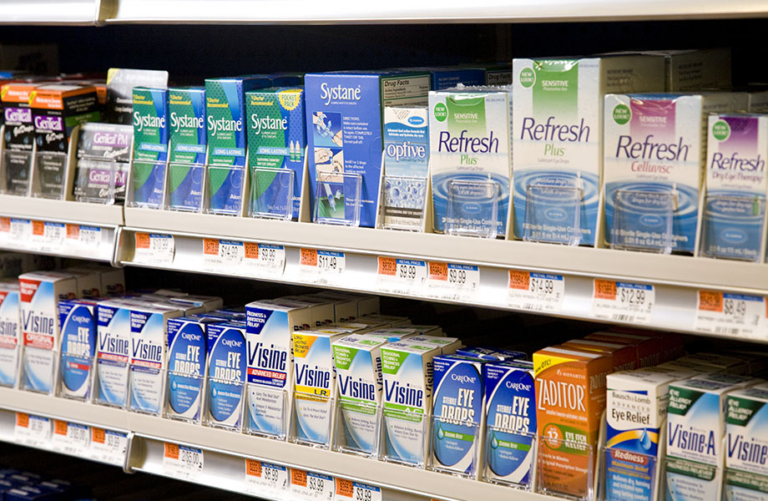Shelf Pusher Systems for Supermarkets vs. Pharmacies
Retail spaces are all about speed, visibility, and space efficiency. Whether it’s a bustling supermarket aisle or a compact pharmacy shelf, product presentation isn’t just visual—it drives sales. That’s where shelf pusher systems come into play. But here’s the twist: not all retail spaces are created equal. So how do shelf pusher systems perform in different settings like supermarkets and pharmacies?
Shelf pusher systems help streamline product arrangement and speed up shelf management, but their design, application, and impact can vary significantly between supermarkets and pharmacies.
If you’re wondering whether one system fits both environments, the answer is a bit more nuanced. Keep reading—we’re about to compare the use of pushers in both worlds and help you figure out which type suits each store format best.
What are shelf pushers used for in supermarkets?
Supermarkets deal with volume—and lots of it. We’re talking fast-moving consumer goods (FMCG) like beverages, snacks, and toiletries. Shelf pusher systems in this context are less about aesthetics and more about efficiency and stock rotation. These systems typically use spring-loaded tracks or rollers to keep products front-facing and easily accessible, no matter how frequently they’re picked up by customers.
In supermarkets, shelf pushers reduce labor time and help maximize sales by keeping products always visible and reachable, which is crucial in high-traffic zones.
Let’s break it down even more.
Product Rotation and FIFO Compliance
One major advantage in supermarkets is FIFO (First In, First Out) compliance. Shelf pushers automate the process of moving older stock forward, helping prevent expiry issues in perishable items like dairy, meat, and packaged salads.
High Load Capacity Requirements
Supermarket items can be heavy—think canned goods or beverage bottles. This means shelf pushers need to be made of high-strength materials like reinforced PET or ABS. Supermarkets benefit from systems that can handle weight without bending or losing spring tension.
| Supermarket Shelf Pusher Needs | Description |
|---|---|
| Weight Capacity | Must support heavy items like jars and drinks |
| Length/Depth | Longer shelves require modular extensions |
| Maintenance | Easy to clean, replace springs if needed |
| Product Categories | Canned goods, drinks, packaged snacks |
Labor Efficiency
Staff can refill shelves faster. Because products stay organized automatically, restocking becomes a breeze. A pusher system cuts time spent manually facing items, which adds up during peak store hours.
How do shelf pushers help organize pharmacy displays?
Pharmacies focus more on precision and clarity than volume. Compared to supermarkets, shelf pushers in pharmacies are used to tidy up compact items like OTC meds, cosmetics, and health supplements. The goal? Clarity and customer trust.
In pharmacies, shelf pushers ensure visual neatness, reduce clutter, and support small product merchandising with surgical precision.
Now let’s dive into the details.
Compact Product Handling
Pharmacy items are often light—like pill bottles, skincare tubes, or eye drops. Pushers in this setting don’t need high-tension springs. Instead, they require tight spacing and fine alignment to ensure even the smallest box stays upright and visible.
Security and Compliance
Pharmacies sometimes stock sensitive items, which makes controlled visibility important. Shelf pushers can support transparent dividers or front lips that prevent tampering while keeping products easily viewable.
| Pharmacy Shelf Pusher Needs | Description |
|---|---|
| Low Tension Springs | For lightweight packaging |
| Narrow Track Width | To fit small items precisely |
| Product Visibility | Must ensure front-facing display |
| Integration with ESLs | Supports digital price label systems |
Visual Clarity
The visual layout of a pharmacy shelf directly influences consumer confidence. Misplaced or messy packaging looks unprofessional. Pushers help maintain a clean, clinical look, which reflects the reliability of the store.
Which shelf pusher types work best for heavy products?
Heavier products pose structural challenges. Whether it’s 1-liter soda bottles or large cleaning supply containers, the shelf pusher must not buckle under pressure.
For heavy goods, spring-loaded pushers with reinforced tracks and adjustable dividers are ideal.
Let’s unpack what makes a shelf pusher suitable for this job.
Key Design Features
- Thicker push plates to push with force without snapping
- Wide base tracks to maintain alignment under weight
- High-tension springs that can withstand repeated cycles
Material Composition Comparison
| Material | Strength | Flexibility | Cost | Use Case |
|---|---|---|---|---|
| ABS | High | Moderate | Medium | Beverages, bulk grocery |
| PETG | Very High | Low | Medium | Repeated heavy-use environments |
| Polycarbonate | Excellent | Good | High | Premium applications, cosmetics |
In high-turnover supermarket areas, durability and lifespan matter more than aesthetics. Pushers here act like silent workers, doing the heavy lifting—literally.
Are pusher systems different between pharmacies and supermarkets?
Absolutely. The layout, load, and display goals are completely different, which means customization isn’t just a luxury—it’s a necessity.
Supermarkets need durable, high-volume systems; pharmacies need precise, neat solutions.
Let’s look at a side-by-side comparison.
| Feature | Supermarkets | Pharmacies |
|---|---|---|
| Product Size | Medium to large | Small to medium |
| Traffic Volume | High | Moderate |
| Shelf Width | Wide | Narrow |
| Visibility Requirements | Medium | High |
| Spring Tension | Strong | Light |
| Use of ESL Mounts | Moderate | Very High |
The key is adaptability. Some systems are hybrid-friendly, but most brands should consider tailored configurations based on industry.
What layout improves shelf pusher performance in each store type?
There’s more to pusher systems than just the tracks—they have to be matched with the right layout for the environment.
The layout design of pusher systems impacts product accessibility, shelf stability, and customer interaction.
Here’s what works:
For Supermarkets
- Horizontal Alignment: Helps stock more products per shelf
- Open-front designs: Allow quick grabbing of bulk items
- Sloped shelves: Aid gravity-assisted movement for beverages
For Pharmacies
- Vertical segmentation: Supports separation of brands and categories
- Clear dividers: Improve product contrast and selection accuracy
- Front stops with branding: Build visual identity for top-shelf items
| Layout Element | Supermarket Focus | Pharmacy Focus |
|---|---|---|
| Shelf Depth | Maximize product count | Optimize visibility |
| Divider Material | Reinforced PET or ABS | Transparent acrylic |
| Label Space | Wide labels | Small ESL mounts |
Each design enhances both operational ease and customer satisfaction.
How does product size affect pusher system choice?
Product size isn’t just about height—it includes width, depth, and packaging structure, all of which dictate the right pusher configuration.
Larger or awkward-shaped items require adjustable pushers and stronger dividers; smaller ones need tighter spacing and lighter tension.
Let’s break it down:
Categories by Size
| Product Size | Common Products | Pusher Design Needs |
|---|---|---|
| Small | Eye drops, pills | Thin tracks, light springs |
| Medium | Snacks, toothpaste | Medium dividers, standard tension |
| Large | Drinks, detergent | Wide pushers, reinforced structure |
Incorrect sizing can cause jamming, misalignment, or pusher wear-out. Always measure your product and choose pushers accordingly.
Do supermarkets need stronger pusher systems than pharmacies?
In most cases, yes. The average supermarket shelf handles more weight, more reach-ins, and more restocking events compared to a pharmacy.
Stronger spring systems and wider push plates are essential for high-traffic, heavy-load retail environments like supermarkets.
Where pharmacies value elegance and clarity, supermarkets demand endurance. That means more reinforcement, modularity, and tolerance for wear and tear.
| Need | Supermarkets | Pharmacies |
|---|---|---|
| Load Bearing | High | Low to medium |
| Daily Interactions | Dozens per product line | A few per shelf |
| Cleaning Frequency | Weekly | Daily |
The heavier the product, the more force is needed. That translates directly into higher specs for supermarket applications.
Conclusion
Shelf pusher systems may serve a common purpose—keeping shelves neat and products accessible—but their actual designs and performance vary significantly across different retail sectors. Supermarkets demand durable, high-capacity pushers built to endure heavy items and fast turnover. Pharmacies, in contrast, prioritize visibility, precision, and space efficiency. Choosing the right pusher system isn’t just about aesthetics—it’s about aligning the hardware with your store’s operational DNA. Whether you run a supermarket or pharmacy, investing in the right system can save time, improve customer experience, and drive long-term efficiency.



